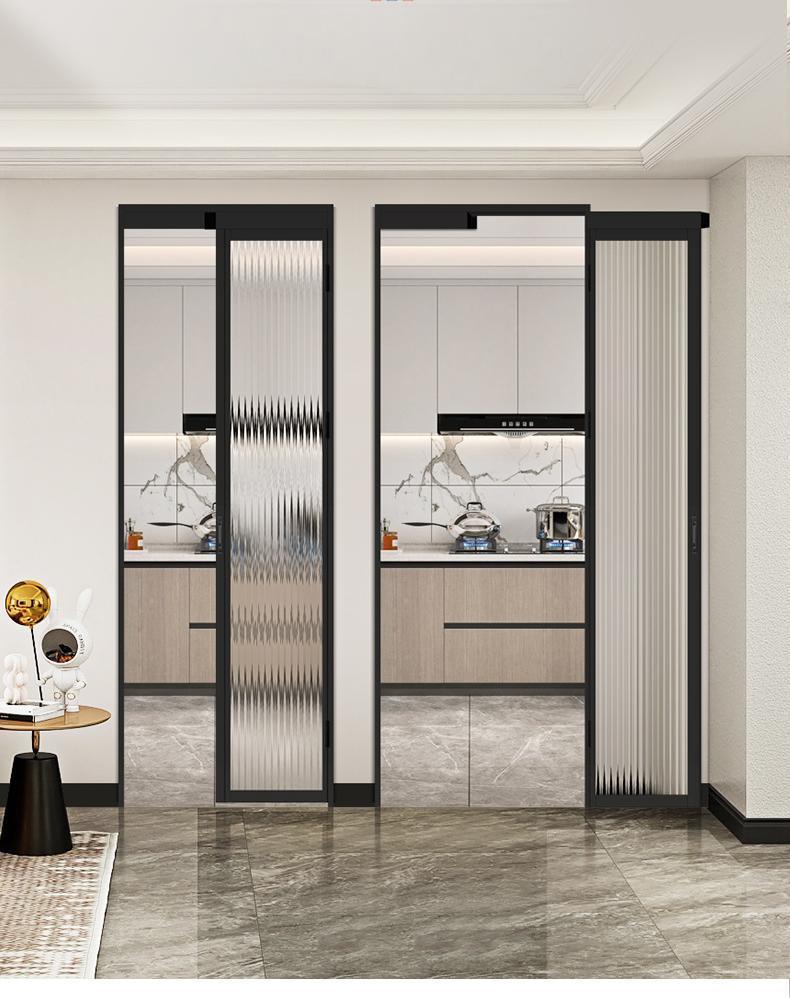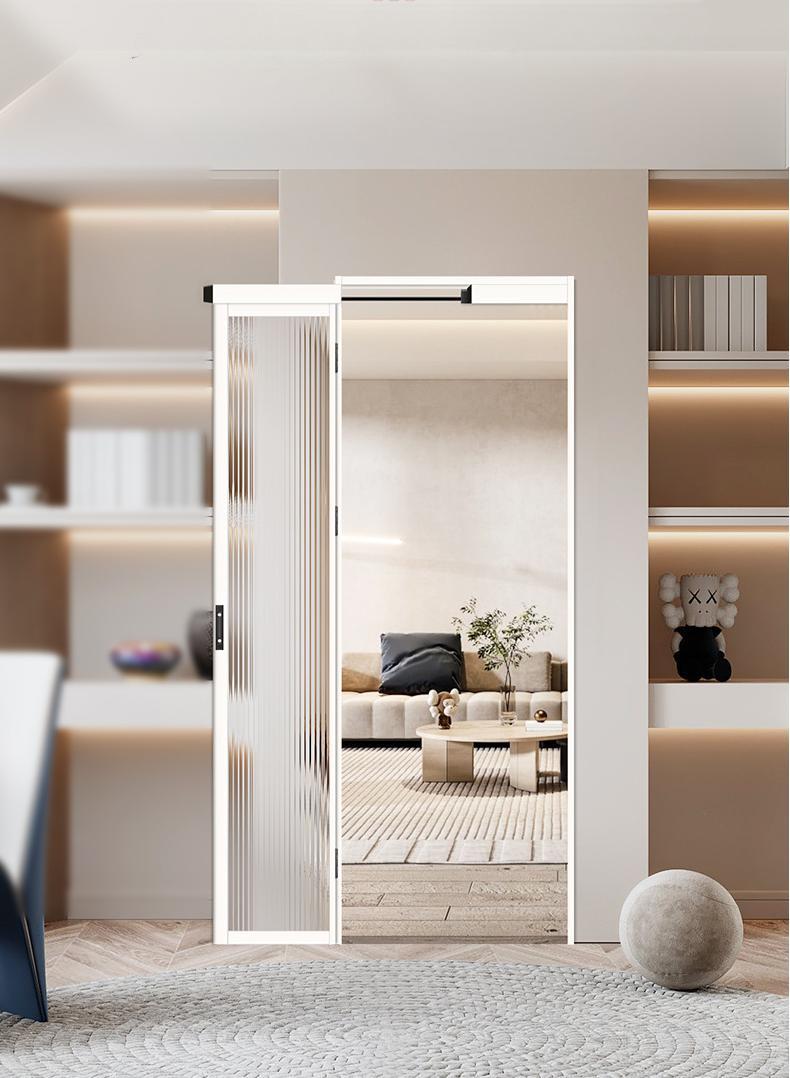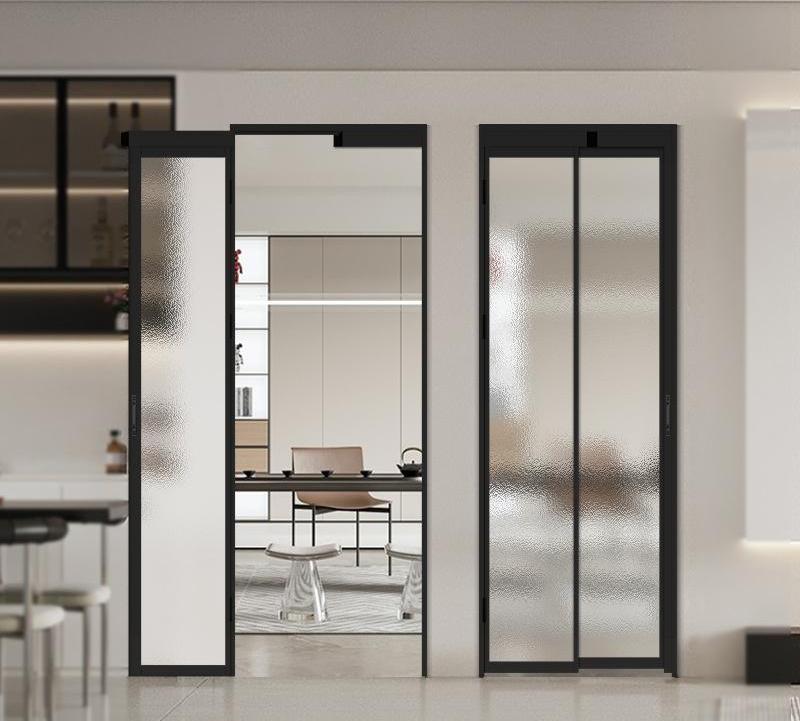PD Door: The Ultimate Solution for Modern, Space-Saving Design
The PD door, also known as the PT door, is revolutionizing the way we think about doors in modern architecture. This innovative door system seamlessly combines the functionality of sliding and swinging doors, offering homeowners and architects a versatile, space-saving solution. Primarily crafted from aluminum, the door was first developed in Singapore to meet the evolving demands of modern architecture while enhancing space efficiency.
What Is a PD Door?
A PD door (short for Push-Dual) or PT door (short for Ping-Tui) is a unique type of door that merges the best aspects of swinging, sliding, and folding doors into one integrated design. Whether you’re dealing with tight spaces, looking to enhance the aesthetic appeal of your space, or seeking a functional door solution, the PD door has you covered.
- PD Door: The “P” stands for Push, highlighting the door’s ability to swing open. The “D” stands for Dual, emphasizing its dual functionality as both a sliding and a swinging door.
- PT Door: The PT door combines the Chinese words for Swing (Ping) and Sliding (Tui), accurately reflecting its versatility.
Both names describe the same door system, which is also frequently referred to as a swing-sliding door, combining the best of both worlds.
Origin of the PD Door: Innovation in Design
The PD door was developed in Singapore, a city known for its cutting-edge architectural designs. It was introduced to address two primary issues in modern homes and commercial spaces: the need for more efficient space usage and the desire for doors that are both functional and aesthetically pleasing.
The unique design of the door has been tailored to meet the specific needs of smaller spaces, where traditional doors, especially swinging doors, can occupy too much valuable real estate. The PD door’s ability to slide open and swing in various directions provides enhanced functionality while minimizing the amount of space it occupies.

Read More: Origin of the PD Door: Innovation in Design
Key Features of the PD Door
The PD door is equipped with innovative features that distinguish it from traditional door systems. Here are some of its most notable qualities:
1. Easy Operation and Versatility
One of the biggest advantages of the PD door is its versatility. The door can be opened using a variety of methods, including a push-pull mechanism or it can slide along a track. This means that you can use the door in a way that suits your space and lifestyle. For instance, if you have your hands full, you can simply push or pull the door open. If you want to open the room completely, you can slide it to the side.
Whether you need the door to function as a swinging door or as a sliding door, the PD door adapts to your needs. This makes it ideal for spaces with multiple functions or areas that require flexibility.
2. Trackless Design for Easy Maintenance
Another unique feature of the PD door is its trackless design. Traditional doors often require a bottom track to function, which can accumulate dust and dirt over time. The absence of a bottom track in the PD door makes cleaning and maintenance significantly easier.
With a swing sliding door, there are fewer crevices for dirt to gather, making it easier to maintain a clean and clutter-free environment. Additionally, the absence of obstructions on the ground makes it simpler to move furniture or clean around the door, contributing to a more seamless and efficient living space.
3. Dual Functionality: Sliding and Swinging
The hallmark feature of the PD door is its ability to function both as a sliding and a swinging door. This dual functionality provides unmatched flexibility. The door can be swung open in a traditional manner or slid along a track to save space.
Furthermore, the PD door can be opened beyond 90 degrees and up to 180 degrees, allowing you to adjust the opening width based on the specific layout of the room. Whether you need a small passage or a wide-open space, the swing sliding door allows you to customize your space to suit your needs.
4. Space Efficiency
Space-saving is one of the primary reasons people choose a PD door over traditional swing doors. Traditional swing doors often require a large amount of space to open fully, which can be a challenge in smaller rooms. On the other hand, the PD door only requires a small amount of space to operate, making it an ideal solution for rooms with limited floor area.
Compared to conventional swing doors, it takes up only about 25% of the space needed for a standard door to swing open. This makes it a particularly valuable option for apartments, small offices, and other compact spaces where every inch counts.
5. Durability and Materials
The PD door is typically made from durable aluminum profiles, which are known for their strength and longevity. Aluminum is a lightweight yet robust material that ensures the door will last for many years without losing its visual appeal. The thick aluminum profiles are resistant to wear and tear, making them suitable for high-traffic areas.
Additionally, the PD door can be customized with various finishes, including anodized aluminum or powder-coated options, allowing it to seamlessly fit into a variety of interior styles. Whether you prefer a sleek modern look or a more traditional aesthetic, the PT door offers customization options to meet your preferences.
Read More: Key Features of the PD Door



How Does the PD Door Compare to Other Door Systems?
When considering a door for your space, it’s essential to evaluate the costs, installation requirements, and functionality. Here’s a comparison of the PD door with other popular door systems.
1. Cost Overview: PD Door vs. Sliding and Swinging Doors
The PD door typically comes at a higher initial cost compared to sliding or traditional swinging doors. The complexity of its design and the high-quality materials involved contribute to the higher cost.
- PD Doors: The cost of swing sliding doors can vary widely depending on customization options, size, and installation needs. On average, a PT door can cost anywhere from $400 to $1,000 or more, especially if custom designs or materials are involved.
- Sliding Doors: Standard sliding doors generally cost between $200 and $500. The price can increase if you opt for more elaborate designs, such as multi-panel sliding doors or custom finishes.
- Swing Doors: Traditional swing doors are often the most affordable option, with prices ranging from $100 to $600 for standard models. For higher-end swing doors, such as French doors, costs can go up to $1,500 or more.
2. Installation Complexity
The PD door requires a more complex installation compared to traditional swing or sliding doors. The need for a specialized track system and precise alignment means that the doors often require professional installation. As a result, labour costs for installations tend to be higher than for simpler door systems.
- Sliding Doors: While sliding doors are relatively simple to install, they still require a track system, which adds to the installation complexity and cost. Installation typically ranges between $100 and $500.
- Swing Doors: Swing doors are the easiest and cheapest to install. They do not require specialized tracks or mechanisms, making them a budget-friendly choice.
3. Maintenance and Durability
Maintaining a PD door is relatively straightforward, thanks to its trackless design. The lack of a bottom track means there are fewer places for dust and dirt to accumulate, making cleaning and maintenance easier.
Read More: How Does the PD Door Compare to Other Door Systems?
In comparison:
- Sliding Doors: Sliding doors require periodic cleaning of the track, which can accumulate dirt and debris.
- Swing Doors: Swing doors are low maintenance but may suffer from wear and tear on the hinges over time, especially in high-traffic areas.
When Should You Choose a PD Door?
The PD door is ideal for spaces where functionality, space efficiency, and design are priorities. Whether you’re designing a small apartment, an office, or a commercial space, the PD door offers a practical and stylish solution.
Why Choose a PD Door?
- Maximized Space Efficiency: If you are working with limited space, the swing sliding door offers a significant advantage over traditional swinging doors.
- Versatility in Design: Whether you need a door that swings, slides, or folds, the PD door provides a multifunctional solution.
- Modern Aesthetic: The sleek, contemporary design of the PT door enhances the visual appeal of any space, making it an excellent choice for modern homes and commercial properties.
Read More: When Should You Choose a PD Door?
Conclusion
The PD door offers a unique blend of style, functionality, and space efficiency, making it a top choice for modern interiors. While it may come at a higher initial cost compared to traditional sliding or swinging doors, the long-term benefits of increased space utilization and enhanced aesthetics make it a worthwhile investment.
Whether you’re designing a small apartment, a cozy office, or an expansive commercial space, the PT door is an excellent option that will maximize space and offer flexibility in your design. If you’re looking for a high-quality, functional, and stylish door, the PD door may be just what you need.
Learn More,
How to Choose the Right Window Installation Screws?
4 Best Large Windows That Open
PD Door: Your Essential FAQs
What is a PD Door?
A PD door, or PT door, is an innovative system combining swinging, sliding, and folding door features. It offers dual functionality, allowing it to swing open or slide along a track, providing a versatile and space-saving solution for modern spaces.
Where did the PD Door originate?
The PD door was developed in Singapore. Its creation aimed to address the need for more efficient space usage and aesthetically pleasing, functional doors in contemporary homes and commercial environments, particularly in smaller spaces.
What makes PD Doors easy to operate?
PD doors are versatile and easy to operate. You can open them using a simple push-pull mechanism or slide them along a track. This adaptability allows you to choose the most convenient method for your lifestyle and space requirements.
How does the trackless design benefit me?
The trackless design of PD doors means no bottom track. This significantly simplifies cleaning and maintenance, as there are fewer crevices for dirt and dust to accumulate. It also creates a seamless floor, making the movement of furniture easier.
What is “dual functionality” in a PD Door?
Dual functionality means the PD door can operate as both a swinging door and a sliding door. This unique feature offers unmatched flexibility, allowing you to choose how to open it based on your needs, and it can open up to 180 degrees.
How much space do PD Doors save?
PD doors are highly space-efficient, requiring only about 25% of the space needed for a traditional swinging door to operate fully. This makes them an ideal solution for small rooms, apartments, and other compact areas where space is limited.
What materials are PD Doors made from?
PD doors are typically crafted from durable aluminum profiles, known for their strength and longevity. This lightweight yet robust material ensures lasting visual appeal and resistance to wear, suitable for high-traffic areas. Custom finishes are also available.
Are PD Doors more expensive than other doors?
Yes, PD doors generally have a higher initial cost than standard sliding or traditional swinging doors. This is due to their complex design and the high-quality materials used in their construction.
Is professional installation required for PD Doors?
Yes, PD doors typically require more complex installation compared to other door types. Their specialized track system and the need for precise alignment often necessitate professional installation, leading to higher labor costs.
How do PD Doors compare in terms of maintenance?
PD doors are relatively low maintenance thanks to their trackless design, which prevents dirt buildup. In comparison, sliding doors need track cleaning, and swing doors may show hinge wear over time.
When should I consider choosing a PD Door?
You should choose a PD door if functionality, space efficiency, and modern design are your priorities. They are ideal for small apartments, offices, or commercial spaces where maximizing usable area and enhancing aesthetics are key.



